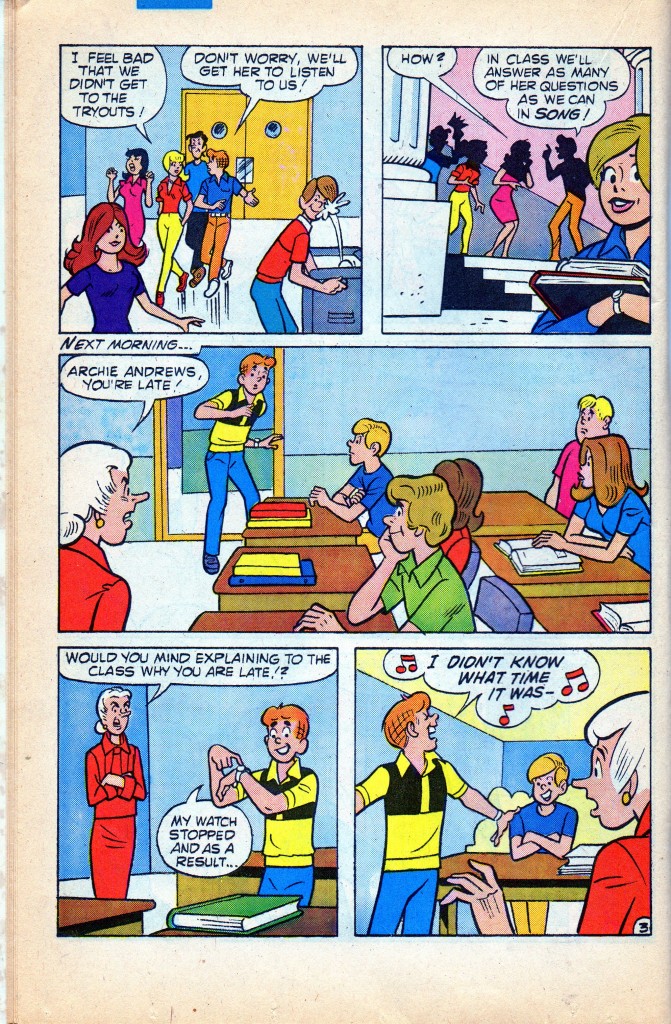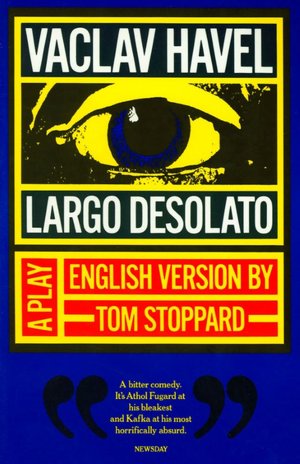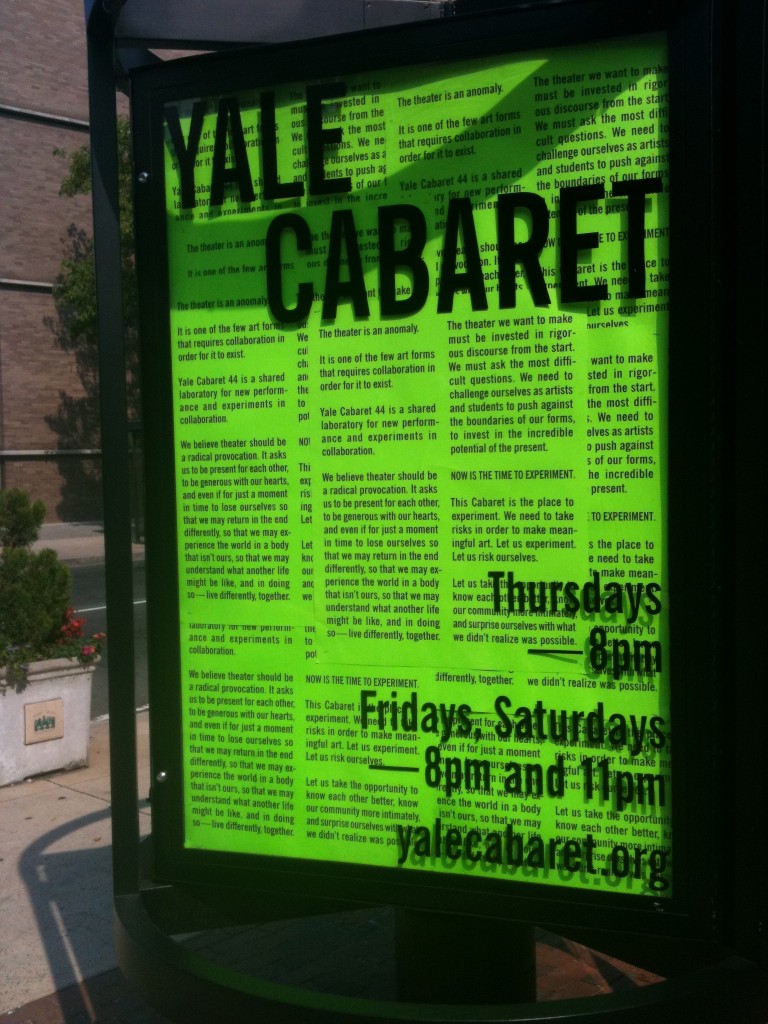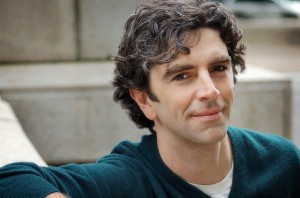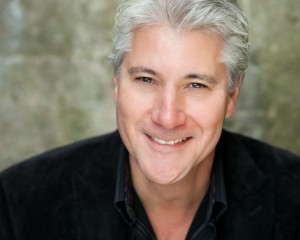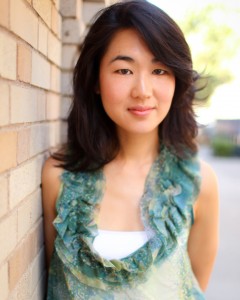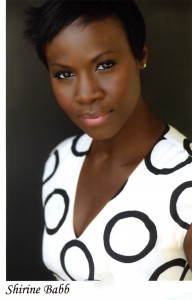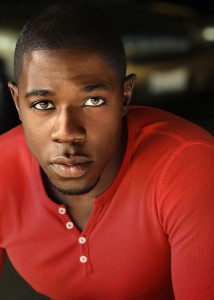
One of the lighter moments from It's A Wonderful Life—A Live Radio Play at the Long Wharf Theatre through Dec. 31. Photo by T. Charles Erickson.
It’s a Wonderful Life—A Live Radio Play
Through Dec. 31 at the Long Wharf Theatre, 222 Sargent Dr., New Haven. (203) 787-4282, longwharf.org.
By Joe Landry. Directed by Eric Ting. Set Design: Mikiko Macadams. Costume Design: Jessica Ford. Lighting Design: Stephen Strawbridge. Sound Design: John Gromada. Stage Manager: Lori Lundquist. Performed by Alex Moggridge (George Bailey), Dan Domingues (Mr. Potter and others), Kevyn Morrow (Clarence and others), Ariel Woodiwiss (Mary Bailey and others), Kate Maccluggage (Ma Bailey and others) and Nathan A. Roberts (onstage Foley Artists and Associate Sound Designer).
Who died and made Frances Goodrich and Albert Hackett the patron saints of cold-season theater in Connecticut? The screenwriting icons of mid-20th century Hollywood were namechecked in the January 2009 Yale Rep premiere of Rinne Groff’s Compulsion, about the competition to adapt The Diary of Anne Frank for the stage. Then, in the fall of 2009, Westport Country Playhouse did the actual Goodrich/Hackett script of The Diary of Anne Frank (with the 1997 Wendy Kesselman amendments). Now the Long Wharf Theatre offers up a stage adaptation of It’s a Wonderful Life. Goodrich & Hackett co-wrote the screenplay of that Christmas classic (which began as a short story by Philip Van Doren Stern, originally titled The Greatest Gift and later The Man Who Was Never Born) with the film’s director Frank Capra.
The Jimmy Stewart/Donna Reed Christmas heartwarmer is certainly no Holocaust drama. But, especially given the moody, downcast direction of director Eric Ting, you see how It’s a Wonderful Life and The Diary of Anne Frank could have flowed from the same pens. They both offer the drama of inevitable tragedy, corrupt despots bleeding honest people dry, awkward romantic scenes, stressed parents taking out their anxieties on their innocent children. The light moments in both shows exist in contrast to harrowing dark ones.
The big difference turns out to be one of practicality. The Diary of Anne Frank requires a single set. It’s a Wonderful Life involves homes, bridges, banks, business offices, a body of water or two, and Heaven. Back in the 1990s, Fairfield Country playwright Joe Landry came up with the clever idea of playing out the movie as an Old Time Radio endeavor, with a handful of actors handling the movie’s dozens of characters and a sound-effects man aurally illustrating those myriad speedy scene-changes. (The script comes with this “copyright note”: “It’s a Wonderful Live—A Live Radio Play is a derivative work for the stage based exclusively on material in the public domain.”)
Director Eric Ting has taken Landry’s basic concept and built it into a symphony of artifice, reality and sentimentality. For the first five minutes of the show, we see onstage Foley Artist Nathan A. Roberts (well known to audiences at the Yale Summer Cabaret over the last several seasons, where he led live bands for Hedwig & The Angry Inch and The Who’s Tommy and provided original music for a host of other shows) using his arsenal of sound devices to precisely mimic the arrivals and slightest movements of the radio actors as they enter the studio. He duplicates the sounds of exhaled cigarette smoke, gulped of coffee and the gyrated girdled hips of the studio’s resident sex symbol played by Kate Maccluggage.

Kate Maccluggage, who gets her own boop-boop-adoop sound effect in It's a Wonderful Life—A Live Radio Play at the Long Wharf Theatre. Photo by T. Charles Erickson.
This Foley follow-around folderol is a conceit not found in Landry’s script, and it sets this It’s a Wonderful Life up as something special from the get-go. But there’s another conceptual wrinkle at the outset—Alex Moggridge (seen early this theater season as Andrei in Sarah Ruhl’s version of Chekhov’s Three Sisters at the Yale Rep) is the first one onstage, garbed in modern-day couch potato attire. From some supernatural vantage point, he marvels at the old-time radio facility, then finds himself suddenly thrust into the rapidly unfurling broadcast in the lead role of George Bailey. Again, this is a Ting innovation not found in the Landry text. Like the Foley Artist angle, it resets our expectations. We know this story cold, but now we are seeing it through different eyes, hearing it through a different microphones.
In this version, when George Bailey loses his bearings and gets angry and suicidal, the audience is with him, falling under the sway of swirling storm sounds and a numbing black-out. This is vintage Eric Ting drama trauma, of a piece with the rain-drenched catharsis he staged in The Bluest Eye and the rumbling subway tremors of Agnes Under the Big Top.
The cast is certainly up for this challenge. Nor do they forsake the already tricky playing styles already required by Landry’s script—the constant patter and rubber-faced mugging of old-school entertainers, the parody advertisements, the crowd-goosing signals for “APPLAUSE,” the quick-voice-change hysterics which occur when an actor enacts a multi-character dialogue single-mouthedly. As the announcer and the evil Mr. Potter, among many others, Dan Domingues comes off as a golden-age radio image of Joel Grey in Cabaret. In the sweeter female roles, Ariel Woodiwiss adds needed warmth and moxie to the proceedings. Kevyn Morrow does the most amusing about-faces, switching from young to old and cocky to withdrawn, all with dapper grace; he also develops a unique take on Clarence the Angel Second-Class, obliterating any sense of Henry Travers in the role from the Capra movie. The aforementioned Kate Maccluggage keeps her poise and classic statuesque-blonde allure even while playing elderly mothers and pouty little girls.
Alex Moggridge, meanwhile, faces whirlwind after whirlwind. There’s the unspoken muddle his out-of-time character finds himself in. There’s the stream of incidents which overwhelm good-natured George Bailey. There’s the relentless pace of the live radio broadcast. There’s that dispiriting black-out. Moggridge manages to seem bewildered yet hopeful throughout this whole soul-battering experience.
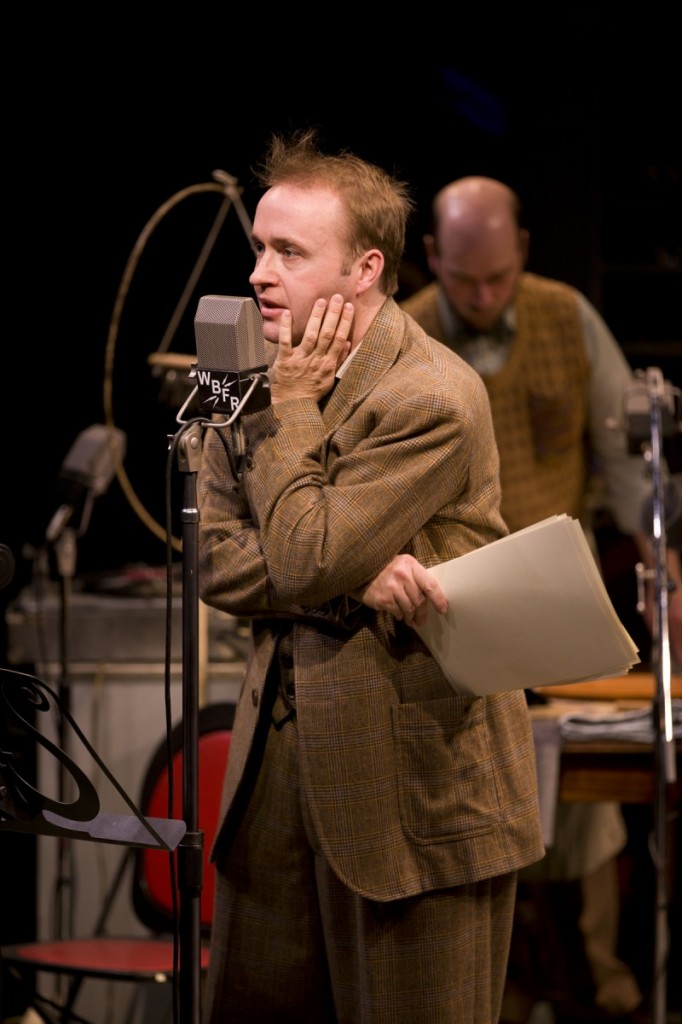
Alex Moggridge, convincingly overwhelmed in It's a Wonderful Life at the Long Wharf. Photo by T. Charles Erickson.
The Long Wharf is hoping that It’s a Wonderful Life is successful enough to become an annual tradition at the theater. That’s happened for other productions of Joe Landry’s script, dating back to its very first production at the Stamford Center for the Arts in the mid-‘90s. A perennial Wonderful Life at Long Wharf would be wonderful, to be sure. It’s the kind of show you want to see twice—the first time to be surprised and moved, the next time to figure out how they did it. It’s also a play about courage, anguish and redemption which lays out the paths not taken so smoothly that the plot always seems fresh.
Yet this deliberately dark and chilly airwave-netherworld vision of a holiday classic may end up being too clever for its own good. There’s a very happy ending, of course, but it can’t equal the beautifully realized turmoil and despair of earlier scenes. Besides, this is a show which telegraphs its own artifice in its opening moments, with the actors reduced to remote sound effects and stereotyped gestures. It’s hard to create genuine sympathy for actors playing actors playing actors playing actors.
It is no small trick to bring depth and intrigue to such a well-known vehicle of Christmas spirit, while simultaneously deconstructing it. Whether these are the appropriate seasonal wrappings for a long-running crowdpleasing success remains to be seen. Like its beleaguered hero George Bailey, this It’s a Wonderful Life has an uncertain future but we should be happy it exists in the here and now.





